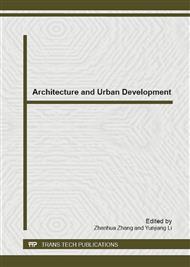p.3
p.8
p.12
p.22
p.27
p.31
p.37
p.41
The Architectural Style and Cultural Connotation of Lu Mansions in Kaiping of Guangdong
Abstract:
During late Qing and early Republican Periods, the Guangdong overseas Chinese people living in North America, Australia, New Zealand and Southeastern Asia came back to their hometown areas to invest and build homes for their families. Thousands of Lu mansions, dwellings for locals, were built during that period. There were three purposes for that construction boom, 1) to build a pleasant and home for their families remained home; 2) for the overseas Chinese themselves’ retirement, because they were not allowed to be naturalized as citizens in their adopted countries; 3) to build a place for their own pleasant retirement, as they believed “fallen leaves should return to their roonts”. Given these reasons, Lu mansions were constructed in a different way from local tradition vernacular architecture, in terms of floor plan, facade, techniques, decoration, and even the most sacred worshipping shrine as well. Taking the Lu mansions in Kaiping as case study, the authors attempt to analyze how the socio-cultural aspects affected local people’s living tradition through building village houses for their families.
Info:
Periodical:
Pages:
12-21
Citation:
Online since:
November 2012
Authors:
Price:
Сopyright:
© 2012 Trans Tech Publications Ltd. All Rights Reserved
Share:
Citation:


